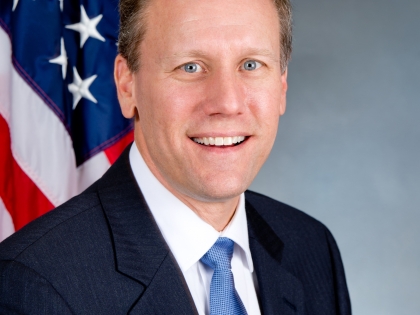
Significant legislative action taken to close deficit and reduce spending
David J. Valesky
December 4, 2009
-
ISSUE:
- Budget
This week, New York State took strong legislative action that represents real progress toward economic recovery in both the short and long term.
Continued declining tax revenues left the state with an approximate $3 billion mid-year deficit, which needed immediate attention to ensure payments to school districts and local municipalities and to protect the state from a downgrade in credit rating.
The DRP that we passed with bipartisan support included a total of $2.8 billion in cuts and deficit reductions, including more than $485 million from state agencies. What is perhaps most significant about this plan is what it excluded—there were no new taxes and fees, and no mid-year cuts to local school aid.
Throughout the DRP negotiations, I stood firm against these new taxes and cuts because I felt they would substantially increase pressure on local governments to increase property taxes on residents, accomplishing nothing but shifting the burden of these reductions to property tax payers.
We can and must reduce state spending, but not simply by shifting the burden to taxpayers through increased property taxes, or through enacting new taxes and fees. Instead, it is incumbent upon us to continue enacting creative legislative and budgetary solutions to reduce the tax burden on New Yorkers while at the same time reducing spending.
The Legislature passed three pieces of legislation in the past few weeks that will accomplish just that by reforming state pensions, reining in public authorities and adopting mandate relief.
Establishing a new tier of pension benefits for public employees will save taxpayers $48.5 billion over the next 30 years, lowering long-term costs to both state and local governments. This is a giant step forward in reducing spending, and we will continue to look for further efficiencies.
Sweeping reform of public authorities, such as the Thruway Authority and New York Power Authority, will allow the Legislature to ensure taxpayer funds are spent wisely, and expand transparency and accountability. More than 1,000 authorities will now have more stringent public disclosure and reporting standards, which have been lacking for decades. You, the taxpayer, will finally have access to information about how these authorities operate and where funds are spent.
The Mandate Relief Act will remove obstacles to local government efficiency, resulting in savings that will have a definitive impact on lowering property taxes. It will help reduce costs for local governments by helping local municipalities save on health insurance, staffing, buying goods, highway maintenance, and bond financing.
Though these are very significant steps toward reining in state spending that has been rampant for decades, we are not out of the woods yet—New York State still faces serious economic issues which will need to be dealt with in the upcoming weeks and months. We will begin work on the 2010-2011 budget in the upcoming weeks, and some tough decisions will need to be made.
As we move through the process, I will work to protect programs and services that are vital to Central New York, continue to focus on economic development and job creation, and fight against increasing the burden on taxpayers.
##
Share this Article or Press Release
Newsroom
Go to NewsroomSen. Valesky’s Sixth Annual Free Senior Fair is October 19 in Madison County
September 25, 2018
Harmful Algal Blooms: What to Know, How to Report
June 29, 2018

Stephen M. Kinne, MD (Ret.)
May 15, 2018

